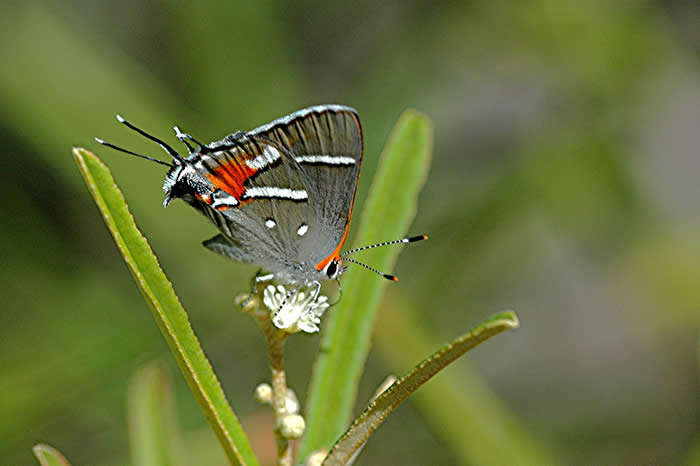Bahia Honda and Big Pine Key
Self-guided Tour by David L. Lysinger
Bahia Honda State Park
One of the brightest jewels in the archipelago of the Florida Keys is Bahia Honda State Park, for many reasons other than the fascinating suite of butterflies it supports. Bahia Honda is an outdoor plant museum of the very first magnitude hosting some of North America’s rarest and most endangered plants.
This small Key also anchors the northern end of the old Bahia Honda Bridge, the most alluring link in Henry Flagler’s “Railroad that went to Sea,” which was completed in 1912. At one time, the lower level of this bridge was the bed for Flagler’s railroad and following the devastating Labor Day hurricane of 1935 that washed away a significant section of the railway, the upper level was adapted to vehicular traffic. The fabulous panoramic view of the beach, Gulf Stream and Atlantic Ocean should not be overlooked in your quest for the rare and beautiful butterflies that occur at this special place.
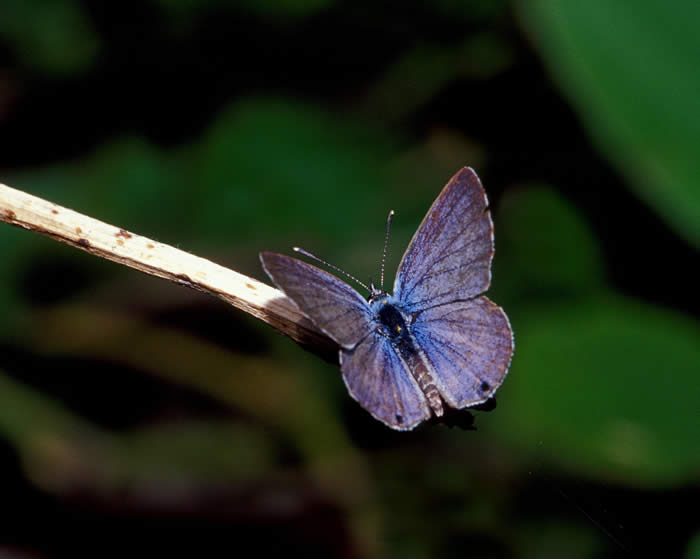
Until its disappearance in 2010, the main attraction on Bahia Honda was our Chapter’s namesake butterfly, the State-listed endangered Miami Blue, Hemiargus thomasi. In 1999 after an earlier presumed extinction, this small, often overlooked butterfly was rediscovered on this island. The Miami Blue occurred for a decade in about a dozen small scattered sedentary populations on Bahia Honda, with its overall numbers fluctuating from only a few adult individuals to at times several hundred. It could be found by scouting the edges of the paths and parking lots where it nectared on Spanish Needles, Bidens alba, and Scorpiontail, Heliotropium angispermum, near patches of its host plant, the very recognizable Gray Nickerbean, Caesalpinia bonduc, a prickly shrub with spiny pods containing gray grape-sized seeds. For more on the Miami Blue, click on Conservation.
However, the Miami Blue has never been the only lure. Bahia Honda’s butterfly garden is usually dependable for Martial Scrub-Hairstreak, Strymon martialis, and Mallow Scrub-Hairstreak, Strymon columella, two more of our South Florida specialties of West Indian origin. Along with many to-be-expected species, Lyside Sulphur, Kricogonia lyside, Amethyst Hairstreak, Chlorostrymon maesites, and Malachite, Siproeta stelenes, are goodies that have also been recorded at Bahia Honda. Large skippers to look for are Long-tailed Skipper, Urbanus proteus, Dorantes Skipper, Urbanus dorantes, Hammock Skipper, Polygonus leo, Mangrove Skipper, Phocides pigmalion. Southern Broken-Dash, Wallengrenia otho, can be found here from time-to-time to test your identification skills.
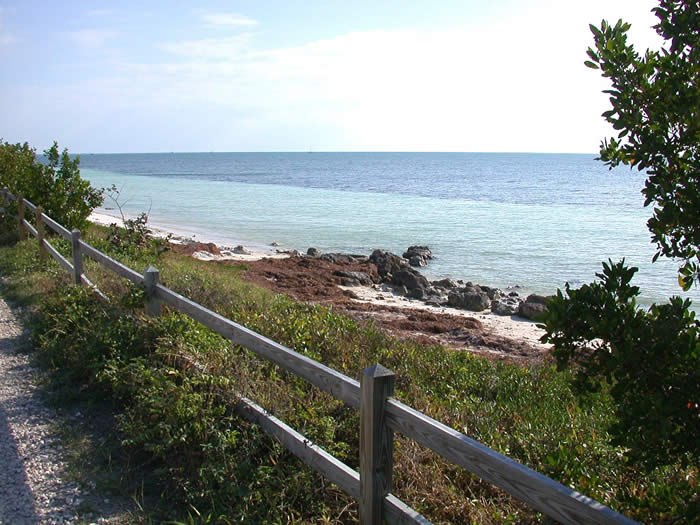
Bahia Honda has a Florida State Park entrance fee with many park amenities, including restrooms and a gift/snack shop. It is located on the oceanside of Bahia Honda Key on US Highway-1, Mile Marker 37.
Bahia Honda State Park
36850 Overseas Hwy.
Big Pine Key, Florida 33043
Phone: 305-872-2353
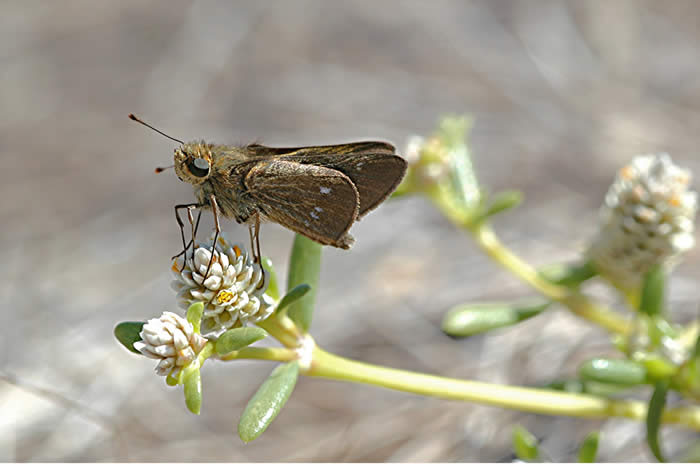
Big Pine Key
Being the largest island in the Lower Keys group, Big Pine Key is also home to several tropical plant associations and the unique life forms that have adapted to the xeric habitat of the Lower Keys. Big Pine Key is the metropolis for the diminutive Key Deer, Odocoileus virginianus clavium, until recently has been habitat for our endemic butterfly, the Florida Leafwing, Anaea floridalis, and host to a magnificent botanical collection of rare and endangered plants.
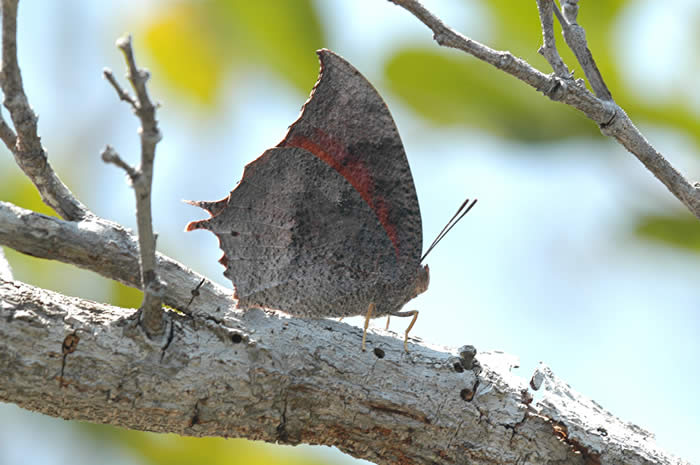
One could spend days butterflying Big Pine Key, but here is a short-list of good places to search. On this Key always look for posted signs and obey their rules.
After arriving on Big Pine Key from the north, make the first left turn onto Longbeach Road until you come to a gate on the left side of the road. Proceed on foot past the gate on the rock-road and look for Eastern Pygmy-Blue, Brephidium isophthalma, in the low vegetation growing in the lower areas. This butterfly can occur there by the hundreds in “boom” times. Also abundant can be Great Southern White, Ascia monuste. If walking conditions permit, venture across the salt pan, past the boulders to Southeast Point for a splendid view of the coast which includes a peek back at the old Bahia Honda Bridge. This is a good place to look for Mangrove Buckeye, Junonia evarete, Hammock Skipper, Obscure Skipper, Panoquina panoquinoides, and if the shrubs along the beach are flowering, you will be treated to a butterfly bonanza.
Bartrum’s Scrub-Hairstreak, Strymon saci, nectaring on Pineland Croton
Photo by David L Lysinger
On Big Pine Key take Key Deer Blvd. to The Blue Hole and Pineland Trail. These are excellent places for Florida Duskywing, Ephyriades brunneu, and keep an eye out for Orange-barred Sulphur, Phoebis agarithe, and Bartram’s Scrub-Hairstreak, Strykmon saci. Ever-hopeful, scan the pinelands for Florida Leafwing, now thought to be restricted to the pine rockalnds of Everglades National Park.
Raccoon Run, which may or may not be marked, also enters into Key Deer Blvd. and is another place to look for Bartram’s Scrub-Hairstreak and Florida Duskywing. Acacia Blue, Hemiargus ammon, occasionally present, can be seen on and around its host plant Pineland Acacia, Acacia pinetorum. Please walk this unimproved road and keep in mind this is a residential neighborhood, so keep your voices low.
